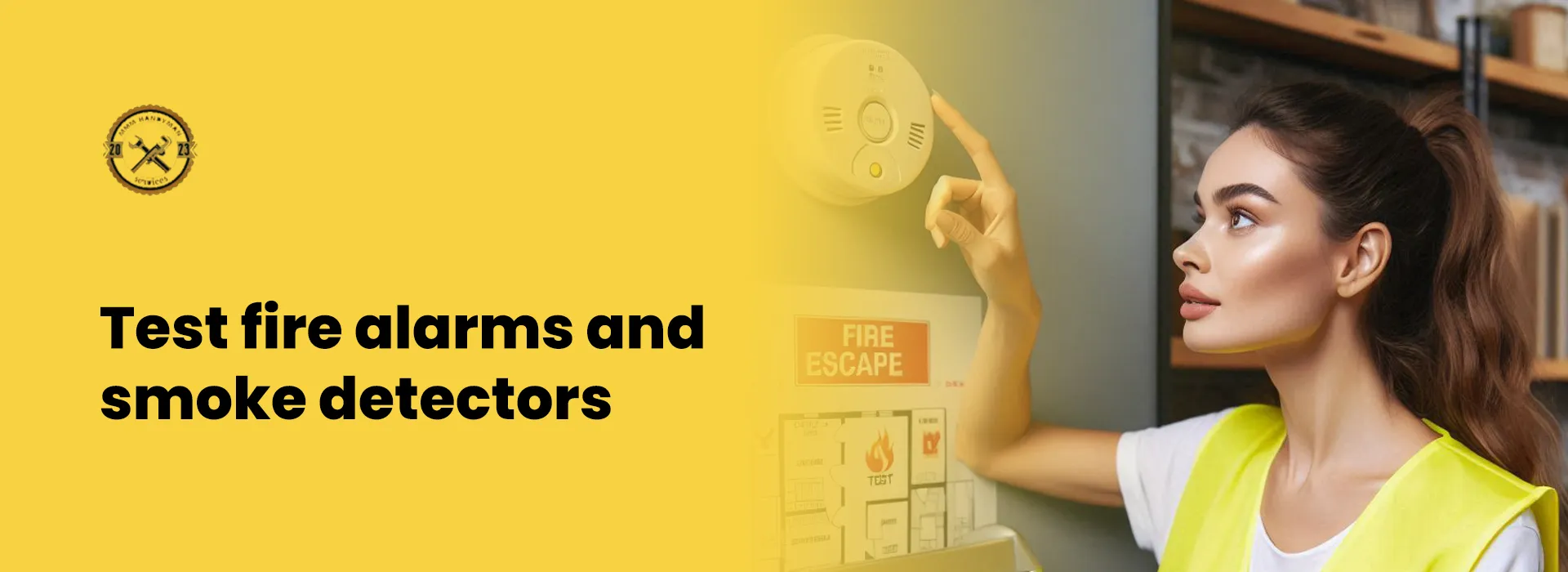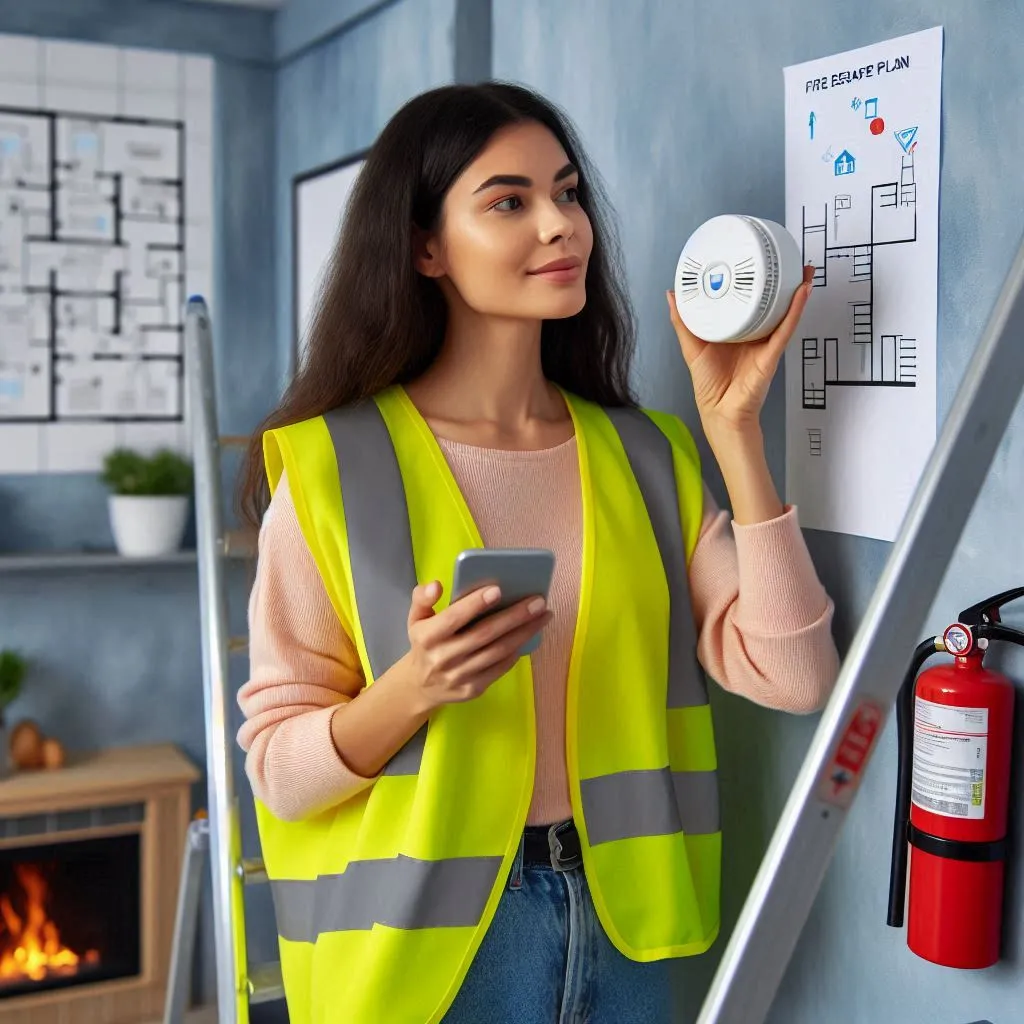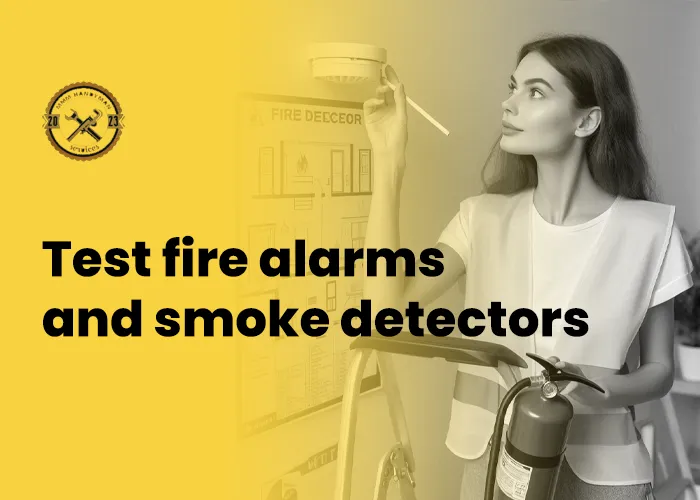
The Importance of Testing Fire Alarms and Smoke Detectors
In any home or business, safety should always be a top priority, and one of the most effective ways to safeguard lives and property is by ensuring your fire alarms and smoke detectors are functioning correctly. These devices serve as the first line of defense in detecting fire hazards, giving occupants critical time to evacuate and call for help. However, they can only be effective if properly maintained and regularly tested.
Why Testing Fire Alarms and Smoke Detectors Matters
Fire incidents can escalate rapidly, and early detection is crucial. A functioning smoke detector can reduce the risk of dying in a fire by nearly 50%, according to the National Fire Protection Association (NFPA). However, many homes and businesses overlook regular maintenance and testing, leaving their fire detection systems vulnerable to failure.
Table of Contents
Common Issues with Fire Alarms and Smoke Detectors:
- Dead or missing batteries: Battery-operated devices require routine replacement.
- Sensor wear and tear: Over time, dust, debris, and aging can compromise performance.
- Improper installation: Detectors may fail to work if not installed in optimal locations.
- False sense of security: Without testing, devices might appear functional but be non-operational during an emergency.
How to Properly Test Fire Alarms and Smoke Detectors
Testing your fire alarm and smoke detector is a straightforward but vital process. Here’s a step-by-step guide to ensure your devices are in good working condition:
Check the Power Source:
- For battery-operated devices, ensure batteries are fresh and securely installed. Replace batteries at least once a year or whenever the low-battery chirp sounds.
- For hardwired alarms, verify the connection to your home’s electrical system.
Inspect the Device:
- Look for physical damage, such as cracks or discoloration, which might indicate wear.
- Clean the device regularly to remove dust and debris, as these can interfere with the sensor.
Conduct a Sound Test:
- Press the test button on the alarm. A loud, audible signal should emit, confirming that the alarm is working.
- If the sound is weak or non-existent, replace the batteries or consult the manufacturer’s instructions for further troubleshooting.
Use Testing Sprays:
- For smoke detectors, use an aerosol spray specifically designed for testing smoke alarms. This helps verify the device’s ability to detect smoke particles accurately.
- Avoid using real smoke, as it could be hazardous and damage the unit.
Simulate Fire Scenarios (With Caution):
- Some advanced systems allow for simulated fire tests that trigger alarms across interconnected units. Consult your system’s manual for guidance.

Establishing a Regular Testing Schedule
Testing your fire alarms and smoke detectors should become a routine habit. The NFPA recommends the following schedule:
- Test alarms once a month.
- Replace batteries annually or as needed.
- Replace the entire unit every 10 years or according to the manufacturer’s guidelines.
For businesses and larger facilities, a fire safety professional should inspect and test all detection systems annually.
Integrating Smart Technology
Modern fire alarms and smoke detectors have evolved significantly with the advent of smart technology. Wi-Fi-enabled devices can send alerts directly to your smartphone, ensuring you’re notified even when you’re away. These systems often come with self-testing capabilities, making maintenance more convenient. However, manual testing should still be performed periodically to ensure optimal performance.
Beyond Testing: Additional Fire Safety Measures
While testing fire alarms and smoke detectors is critical, it’s just one component of a comprehensive fire safety strategy. Consider these additional measures:
- Install alarms in all key areas, including bedrooms, hallways, and kitchens.
- Ensure fire extinguishers are readily accessible and in working condition.
- Develop and practice a fire escape plan with all household members or employees.
- Regularly inspect and maintain heating systems, electrical wiring, and appliances to reduce fire risks.
Addressing Common Myths About Fire Alarms and Smoke Detectors
Myth 1: Fire alarms are set-it-and-forget-it devices.
- Reality: Without regular testing and maintenance, these devices can fail when needed most.
Myth 2: Only large homes or businesses need multiple detectors.
- Reality: Fires can occur in any space. Installing multiple alarms increases your chances of early detection.
Myth 3: Smoke detectors are sufficient without fire alarms.
- Reality: While smoke detectors detect smoke, a fire alarm system offers a more comprehensive solution by integrating with sprinklers and emergency alerts.
Regularly testing your fire alarms and smoke detectors is a simple yet powerful way to protect lives and property from fire-related tragedies. These devices are only as reliable as their maintenance, and neglecting them could have catastrophic consequences. By establishing a consistent testing schedule, addressing issues promptly, and embracing modern technology, you can ensure that your home or business remains a safe environment for everyone.
Don’t wait for an emergency to find out if your fire alarm or smoke detector is working. Take action today to safeguard your loved ones and your property.
Add Your Heading Text Here
Lorem ipsum dolor sit amet, consectetur adipiscing elit. Ut elit tellus, luctus nec ullamcorper mattis, pulvinar dapibus leo.

